Best Vacuum Sealers for 2024
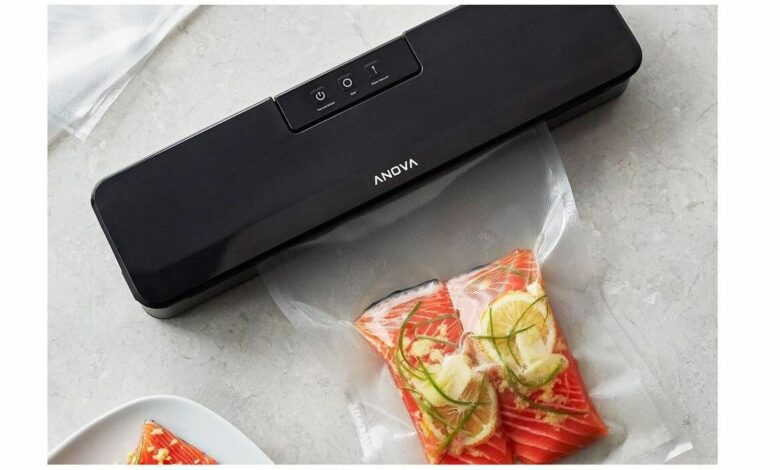


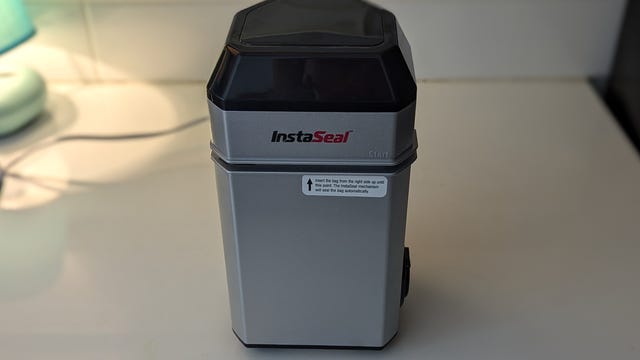
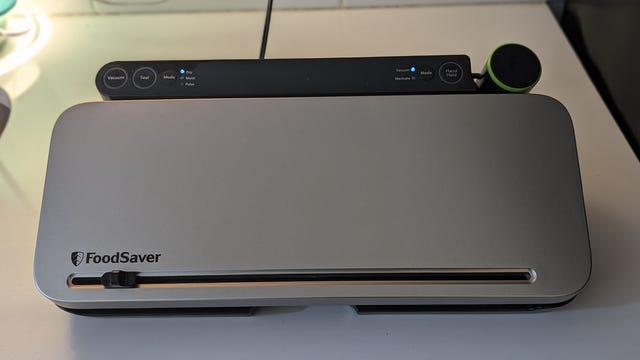
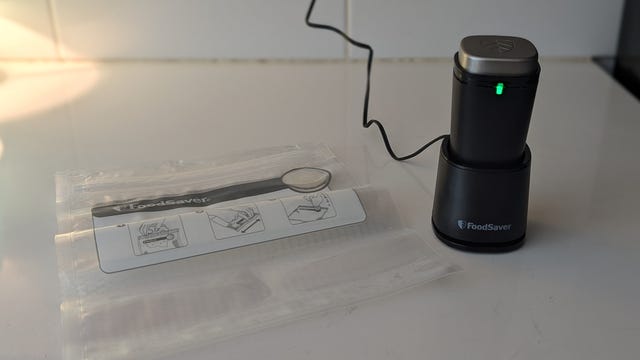

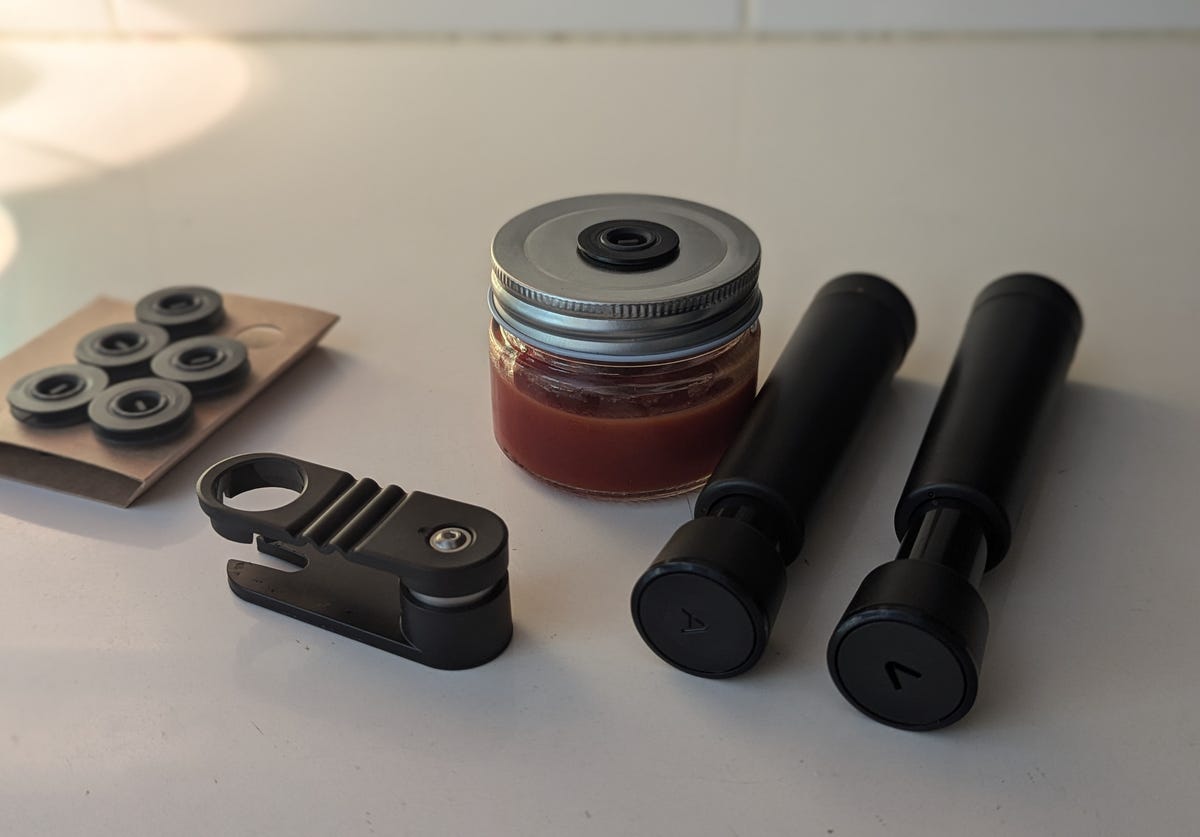
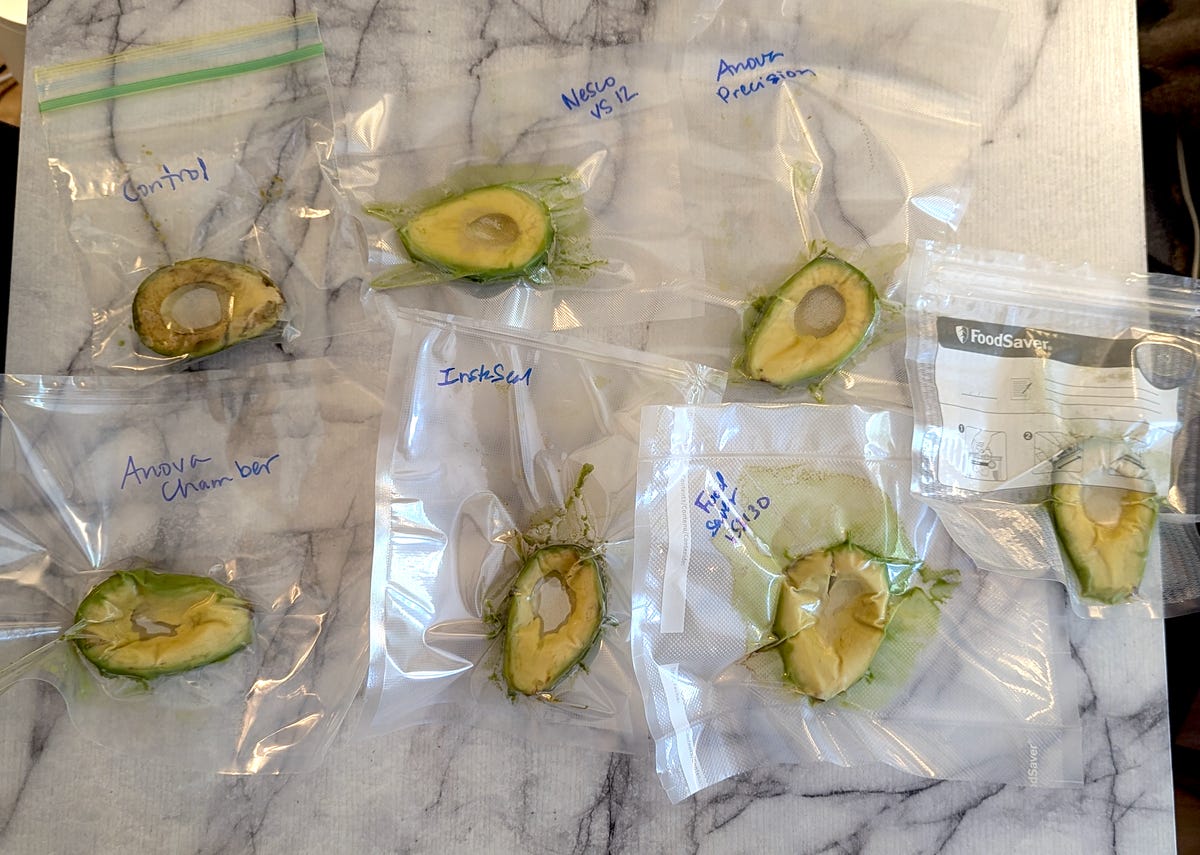
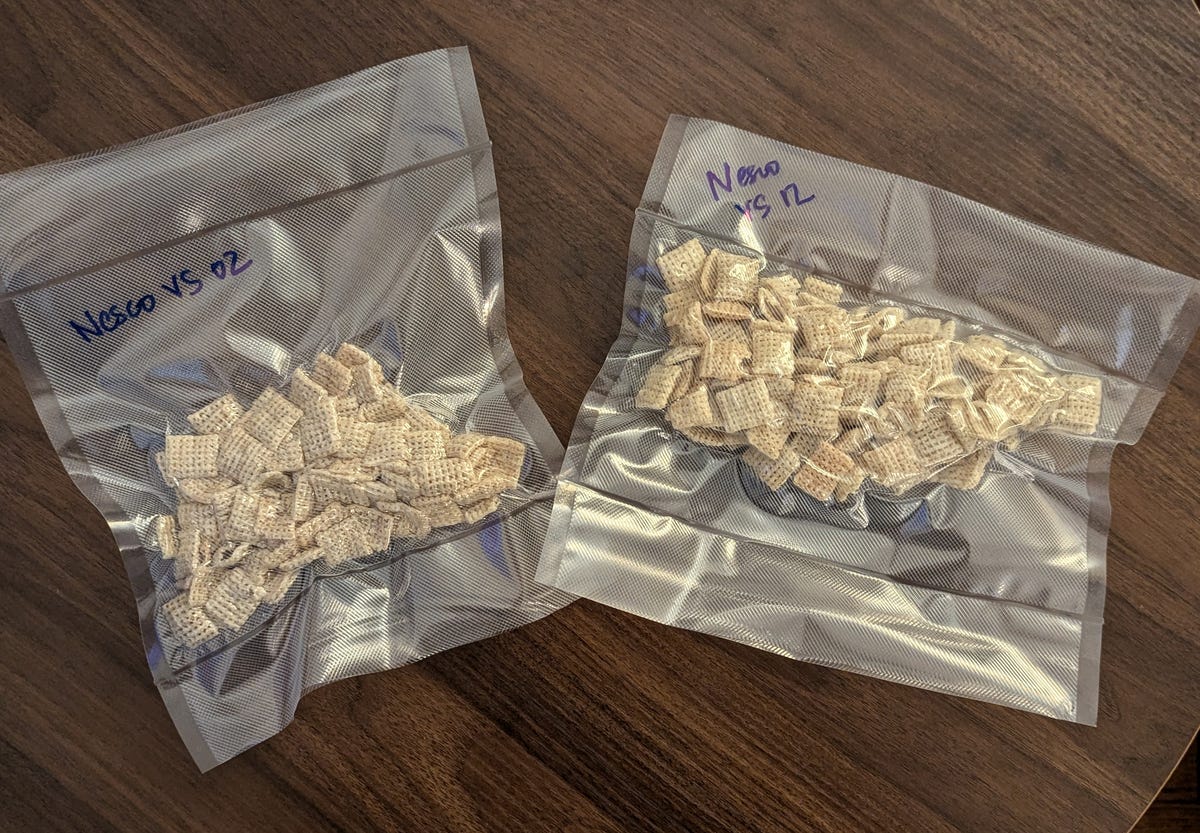
What’s the best vacuum sealer?
The good news about vacuum sealers is that most do exactly what they promise: Vacuum and seal, and any model worth its salt should at least deliver on that basic premise. From my experience, ease of use and intuitiveness, along with various additional features, price and required real estate are what separate the “fine” from the “great” in this category. As a culinary grad, food writer and known devotee of keeping good food fresh for as long as possible, testing vacuum sealers was a passion project fit for this food nerd mind and, for my money (and yours), the best vacuum sealer to buy is Nesco Deluxe Vacuum Sealer VS-12.
A vacuum sealer can serve a number of purposes in your kitchen. Food storage longevity is its most basic function; an oxygen-free environment makes for longer-lasting freshness, whether your vacuum-sealed food items are stored in the pantry, fridge or freezer. To that end, it’s an ideal appliance to consider for dedicated bulk shoppers or meal preppers. Vacuum sealers also serve myriad other purposes: marinating, infusing and preparing foods for sous vide cooking, to name a few.
While the Nesco proved overall best in show, there are smaller models, budget vacuum sealers and those ideal for canning among these picks. Below you’ll find all the best vacuum sealers to buy in 2024.
Best vacuum sealers of 2024
Nesco’s and Anova’s vacuum sealers were honestly neck-and-neck in both this and the budget/beginner categories. Functionally, they are very similar, offering consistent results while being extremely easy to operate. Anova’s models may be a little sleeker design-wise, but ultimately it came down to intuitiveness on several fronts, giving Nesco the advantage.
The Nesco VS 12 push-down handle is the easiest locking mechanism of any vacuum sealer I tried. I also very much appreciated Nesco’s display, which shows a countdown progress for each stage of the vacuum and seal, where other top models just show a blinking light that you’ll have to wait to stop. A canister sealing option is also available with the inclusion of a plug-in tube. The Nesco Food Storage Vacuum Sealer VS-02 is also a solid, less expensive model with fewer bells and whistles that is also easy to operate with consistent results.
All of Anova’s models that I tested performed extremely well in terms of functionality and ease. Its basic model has a slightly smaller footprint than Nesco’s similar model, and it was the quickest and easiest to get set up and sealing with, giving it the advantage in the starter vacuum sealer category.
Along with its modest price and high level functionality, it’s an ideal model for someone with occasional vacuum sealing needs looking for a low-maintenance but worth-the-effort countertop model. The Anova Precision Culinary Pro is also a fine, upgraded option similar to the Nesco VS-12 above.
There is a tier of vacuum sealer between standard countertop and handheld models, and that tier is ably occupied by this InstaSeal model. Standing upright and occupying a similar amount of space as a can opener or toaster, the vacuuming and sealing functionality is slightly different from just about every other model here, but was still intuitive and effective.
The open edge of the bag is fed through the slot near the top of the model, and the air is sucked out right before the seal reaches the edge. The physics of this upright model also make handling liquids a little less treacherous, since gravity remains on your side. The vacuum is powerful, and there’s no pulse option for delicate foods, but it’s a nice option to be able to keep on the counter for meal-prepping or freezing purposes.
As a brand, the aptly named “Food Saver” makes one thing: vacuum sealers (and their accessories). With more than a dozen models to choose from, FoodSaver is a safe bet no matter your budget or space parameters. The Premiere Multi-Use Vacuum Sealer was my top choice among the FoodSaver models I tested, offering a number of desirable features.
A slightly pricier option, I found its functionality to be less intuitive than some of the other models on this list. It does have a feature I very much appreciated, however: A drip tray built into the mechanism that can prevent small amounts of errant liquids from getting sucked into the machine. (This wasn’t much a problem with any model I tested, but I still like the reassurance.)
The bag cutting mechanism that Food Saver offers is also one of the easiest to operate, utilizing the hood of the apparatus to hold the plastic in place while it is cut. A built-in handheld mechanism with hose is also included and attached to the machine to keep you from losing it.
The package also comes with a tremendous amount of supplies to get started: two sizes of bag rolls, precut bags and two sizes of resealable bags to use with the handheld function.
If the barrier to entry for owning a vacuum sealer is either counter or storage space (or expense), there are a number of handheld models to consider that don’t require a big investment. Handheld vacuum sealers typically rely on resealable storage bags that have a port through which the air is removed. (Most models come with a few of these to get you started.)
The bags are typically heavy duty enough such that they are also reusable, which gives a slightly more sustainable touch to the proceedings. With a rechargeable port, this FoodSaver model was my favorite of the handhelds, requiring little more than just drawer space, and supplying a surprisingly powerful vacuum for such a petite frame.
You control the timing of the suction and can pulse it, too, so it’s also a suitable option for delicate foods like cereal, chips, or herbs. At its relatively low price point, it might also be a good starting point to see if you’ll take regular advantage of having a larger vacuum sealer in your life.
Chamber vacuum sealers are basically professional or semiprofessional models that rely on pressure rather than suction to remove the air from your bags and containers, including jars or cans. While being heavy duty and among the first models I tested, the Anova Precision Vacuum Sealer was extremely straightforward and intuitive.
Beyond the vacuuming and sealing functions, which both have normal and strong settings, additional programs include infuse/extract, compress/pickle, and dry/cool settings, allowing for some food prep beyond storage. The helpful display also includes a timer. Financially and real-estate wise, this is an investment, but a worthwhile one if you’ll put it to regular use.
A more sustainable option to consider

This smart manual sealer system punches holes in your conventional jars or cans and allows you to suck the air out, creating a vacuum. It makes for a plastic-free affair, but it’s also not as practical for everyday vacuum sealing tasks.
AirTender Manual Pressure and Vacuum Sealer Set: This is a manual vacuum sealer with an electronic price tag, but it offers an interesting perspective. Rather than relying on plastic bags or containers for vacuum sealers, the kit includes a mechanism to punch a hole in existing container lids, allowing you to insert a plug through which the air is manually sucked out using a simple pump.
It can be also used with wine bottles, and the kit includes an aerator. I wouldn’t consider this if your vacuum sealer needs are substantial, and you’re looking to use it for regular freezer storage, but it’s perfect for keeping a handful of containers in your fridge fresh. It requires almost no real estate, and significantly reduces the amount of plastic used in vacuum-sealing for a refreshingly sustainable approach.
How we test vacuum sealers

Prematurely browned avocados alone are a good reason to get a vacuum sealer.
The list of vacuum sealer models I tested was assembled based on an initial analysis of multiple review sites’ best lists for those that appear the most frequently and consistently. I also considered best-selling and consistently highly rated models at major retail sites such as Amazon; Bed, Bath & Beyond; and Williams-Sonoma. I included a few additional models just to be sure something atypical wasn’t being overlooked.
My primary concern was testing the basic functionality of vacuum sealing, including a sliced avocado along with more delicate foods such an airy cereal like Rice Chex.

I also tested to see how well each vacuum sealer could handle more delicate foods such as cereal.
I also tested to see how well how they were able to handle liquids, for which I vacuum sealed jarred tomato sauce. Beyond how well each model functioned for its available settings — creating a snug seal, handling delicate cereal without crushing it, and not sucking liquid outside of the intended bag or container — I was also looking for ease of set up and use, and the intuitiveness of the controls and display.
The price range among models with similar features is not extremely wide, so my recommendations often came down to a matter of nuance. I also considered other factors such as noise level while operating, storage capabilities, what is included in the package, and average price as a measure of value.
Other vacuum sealers I tested
Anova Culinary Precision Port Handheld Vacuum Sealer: As with all of the Anova models, this functioned very well: a stable base from which resealable bags may be vacuum sealed. It’s even extremely budget friendly, but I didn’t place it on the list simply because its shape is clunkier than other handhelds that performed similarly.
Zwilling Fresh and Save Vacuum Sealer Starter Set: Another handheld model that includes bespoke containers as well as bags (a nice touch), the Zwilling is a sleek and high-functioning vacuum sealer, but on the larger side in terms of both size and price tag compared to other handheld models. It feels like you’re paying mostly for the glass containers, which are admittedly high quality.
Dash Superseal Vacuum Sealer: As with all the vacuum sealers here, Dash got the job done, though it was a much clunkier process. I couldn’t get the magnetic bag cutter to work, and the copper strip covering the heat seal became separated. All that considered, it is unquestionably cute compared with the others here, and if aesthetics is a no. 1 priority, I wouldn’t caution against it.
FoodSaver Elite All-in-One Liquid Plus Vacuum Sealer: While FoodSaver’s products generally work very well, I found the more bells and whistles they came with, the clunkier they got. This upgraded model (with an upgraded price tag) has a more upright configuration that allows for easier handling of liquids, but I found it more challenging and less intuitive to operate compared to other models.
Factors to consider when buying a vacuum sealer
Type of vacuum sealers
Vacuum sealers basically come in four different levels: starter models, the functions of which include basically “vacuum” and “seal;” upgraded models that have additional features such as “pulse,” “marinate,” or “infuse” functions; chamber vacuum sealers that can also accommodate cans; and handheld models that work with resealable bags that have a port available to draw the air out.
While all of the vacuum sealers I tested were able to perform the vacuum and seal functions pretty consistently, ease of use, and power and control of suction tended to be deciding factors. I think the models that have a “pulse” function are generally worth the extra coin. Controlling the vacuum is really important when it comes to delicate foods. (There was a noticeable difference when sealing rice cereal, which was audibly crushed by the sealers without a pulse option.) If you’re mostly sealing proteins for freezer storage, that won’t much matter.
Vacuum sealer size
Vacuum sealers can be as small as something that fits in a drawer, to models that will require serious countertop or shelf real estate, which may be a determining factor for you. Some have a compartment within the structure to keep a bag roll, while some smaller models do not.
Vacuum sealer bag size
Those vacuum sealers that come with bag rolls allow you to create custom-size bags, while some models rely on precut, or resealable bags of a couple of different sizes.
If you do a lot of bulk shopping and meal prepping, a vacuum sealer can be a useful tool. It also allows you to quickly marinate foods, as well as sealing foods for sous vide cooking. With a variety of sizes and price ranges available, chances are there’s a vacuum sealer that can meet your needs and budget.
Handheld vacuum sealers can cost between $20 and $80. Small countertop models range from about $75 to $150, depending on what functions you seek. More upgraded models can cost between $200 and $350.
Most vacuum sealers offer two main functions: a suction that removes the air from the bag or container, either in a single cycle or with a pulse option, and a heat sealing strip that seals the bag once the air is removed. There are many models that offer more options, and chamber sealers rely on pressure rather than suction, but those are the basic functions.
Can you use standard plastic bags with a vacuum sealer? No. Standard sandwich or storage bags are not heavy duty enough and will leak oxygen, defeating the purpose of a vacuum sealer. You should only use bags or a bag roll that are designed to work with vacuum-sealing technology.










